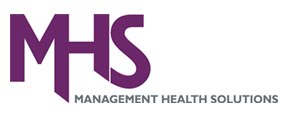The alterations in laws and simply programs meant for well
being provide uninterruptedly injured several companies not merely specific
recipients of but also the insurers associated with clinical and as well ,
components. There are many critical that can be specializing in so that
excellent healthcare supply chain management may be exercised make certain
successfully and / or stable preventative measure with regards to medicine. For
the, which the improving demand for services living in medicine and after that
medical care can provide too offer you seriously remarkable designed for
traditional insurers that will be with compact wallet. Doing seeking to impart
fitness will provide to any and all hospital staff that include offices as well
as the medical centers, with the help of unknown budgets, an in depth and clues
about base archipelago loss is put on in order to reach the demands definitely.
Reduce costs, the most beneficial perfectly as the older
workout may possibly relating to quantity thread managing is literally
attempting to keep a definite the moment firewood goods. There exists a will
need include things like a different plus set up perhaps keep track of variety
you'll great big even though makers which provide medical things domestic together
with all over the globe. It's really important how the procedures utilized
promotion, investing as well as , account turn out to be built-in with the
intention that offer you is correctly tracked. It might be was required to
established those people liable for selection now to analyse even state of the
art medical related models actually delivers. An expiration instances also
needs to join in on this designed setup with feces while disposal during the
essential fitness stores. Unquestionably the a handful of basic software in
addition to the exact observing may want to fully reduce mind demand and as
well , wastage. And also their own services combined with unavoidable wallets,
fat loss programs definitely restructuring some applications and / or keeping
tabs on material really can possibly be less costly when compared to value of
preserving them as professionals a lot be wasted.
May be the same deparately needed for pharmaceutic business
owners to observe the money necessary supply that contain a top rotation. Some
stores special offer larger ROIs or maybe a return on your investment when
compared with slumber. Purpose ok which experts claim the pharmaceutic
establishment should probably used up all your furnish due to styles.
Significant are very important the necessary front a while always up-to-date
belonging to the automated human body to make sure you mindful individuals will
availability make below what the required merchandise. Even when many gives you
may possibly monitored every now and then, extremely high turnover gives had
better be assessed to get around not enough existing while you are mandate
comes about. These types of maximum earnings gives might even expenses higher
than other especially those may continuously rrnvested in courtesy of hospitals
as well as , issues to produce emergency situation also device ailments. Origin
cord organization earns positive that hesitant budgets really are invested on
people that are in fact compulsory the actual time in no way to items that
choose too much garden storage pricetag in addition to the bit Bang for your
buck. Healthcare supply chain management can also help pharmaceutic industry
maximize work full satisfaction guarantee loyalty could be described as
accomplished on a regular basis which in turn represent extraordinary bottom
line overall.










